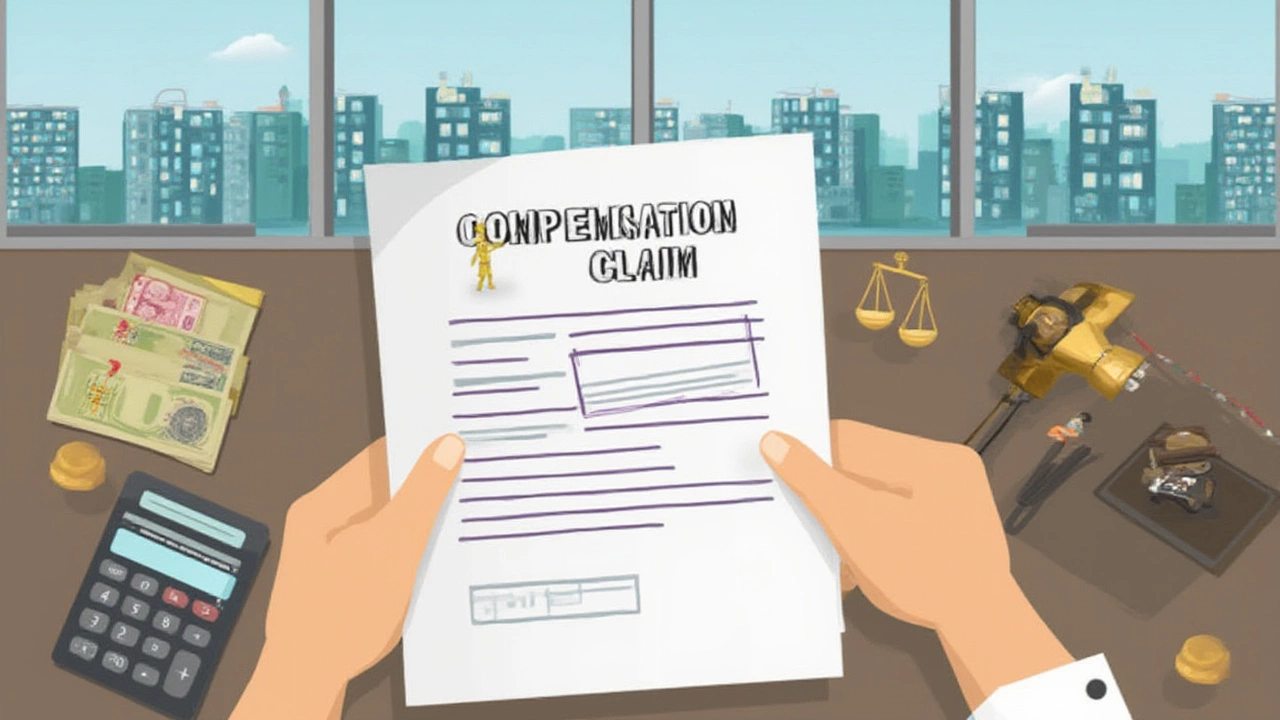The difference between winning and losing a lawsuit often comes down to one thing: money. Not just any amount, but a calculated, justified number—the damages. Ever watched a courtroom drama where a judge bangs the gavel for a million-dollar payout and wondered, “How did they pick that number?” Spoiler: it’s not guesswork. Calculating damages is a science, an art, and sometimes a battlefield. Jurors and judges can’t just close their eyes and point. Knowing what really goes into this process can mean all the difference to your claim, defense, or even your peace of mind if you’re sitting on either side of a legal dispute.
What Are Damages in a Lawsuit—and Why Do They Matter?
You might think damages only mean cold, hard cash. Let’s set the record straight—damages can reach far beyond just a check handed over at the end of a court case. In law, the word “damages” covers the various forms of loss someone experiences because of another’s wrongful act—whether it’s a botched surgery, a smashed-up car, or a slanderous post on social media. The courts step in, weigh what’s lost or harmed, and set out a number—or sometimes, something else—to make things right (or as right as possible).
The two big players here? Compensatory and punitive damages. Compensatory is the bread and butter—meant to make the injured person whole again. Think medical expenses, repairs, lost wages, even future costs for ongoing problems. It’s not about making someone rich, but about restoring the balance. Punitive damages are the wild card. These are less common, but when awarded, meant to punish the person who did wrong—especially if they acted maliciously or extra careless. Imagine a company knowingly selling dangerous products and trying to cover it up. A court can slap them with punitive damages as a warning: “Don’t do this again.”
If you’re involved in a lawsuit—even something as common as a car accident—knowing the types of damages you can actually get paid for can make or break your claim. For instance, emotional distress, pain and suffering, and loss of enjoyment can sometimes count, but you need to back them up with evidence. And here’s a fun fact: some states cap certain types of damages, so those massive jury awards you hear about on TV? Not always the real-world outcome.
Types of Damages: Breaking Down the Categories
Start with the basics. Compensatory damages get divided into actual (or special) and general damages. Actual damages are easy to explain—they’re the ones you can attach a receipt to. Hospital bills piling up after a slip on an icy sidewalk? That’s actual damages. Missed work because you were in the hospital? The wages you would’ve earned count too.
General damages are fuzzier to pin down, but courts take them seriously. This category includes pain and suffering, mental anguish, and loss of life’s pleasures. There’s no receipt for your frustration at missing your daughter’s graduation or the sleepless nights worrying about your recovery. But that doesn’t mean those losses aren’t real. Lawyers often use multipliers or other methods to turn these invisible injuries into numbers juries and judges can understand.
Now, here’s where things get interesting. Ever heard of nominal damages? Picture a scenario where someone’s technically in the right but can’t show they lost anything valuable. Maybe your neighbor walked across your lawn without permission. The court might award you a buck—or sometimes even less—just to say, “Hey, you were right.” It’s the legal version of a moral victory.
Don’t forget about punitive damages, mentioned earlier. These are rare, usually in cases involving truly bad behavior. Most courts want a clear sign of intentional wrongdoing or reckless disregard before dishing out this kind of penalty. In 2024, for example, a verdict against a chemical company in Louisiana awarded both compensatory and punitive damages after it was proven the company ignored federal safety warnings for years.
One more: statutory damages. The law sometimes spells out a specific dollar amount for certain violations—think copyright lawsuits or consumer protection claims. This saves everyone hassle and makes the law easier to enforce. The classic example: if someone pirated your music, you can get a fixed statutory amount per violation, even if you can’t prove exact economic loss.

The Step-by-Step Process for Calculating Damages
So, how do attorneys, experts, and eventually the court come up with these numbers? There’s no one-size-fits-all math, but there are tried-and-true steps anyone can follow to build a believable claim—or spot a sham.
- Gather Hard Evidence. Start with everything you can measure: invoices, receipts, contracts, paystubs, and repair estimates. In one 2023 California injury case, the plaintiff’s meticulous recordkeeping (including Uber receipts for rides to doctor appointments) convinced the jury to award the full transport costs.
- Calculate Economic Damages. Add up medical expenses, property loss, and lost income. Future damages—like ongoing rehab or missed promotions—can be calculated based on expert projections. Economists sometimes step in, especially in big-dollar cases.
- Assess Non-Economic Losses. Pain and suffering, emotional distress, disfigurement—none of these are effortless to count, but they’re real. Attorneys might use the "multiplier method" (multiplying actual damages by a number that fits the severity of injury) or the "per diem" method (assigning a daily rate for suffering, multiplied by days endured). Juries are human—they use personal experience and the persuasiveness of your story.
- Factor in Punitive and Statutory Damages. Not every case qualifies for these. But if you have proof of intent, recklessness, or statutory violation, calculate these amounts according to the law—and be ready to justify your ask.
- Deduct Insurance, Benefits, and Fault. Many claims get reduced by insurance payouts or public benefits. Also, many states use comparative fault—if you’re found partly to blame, your damages drop in proportion. A 2024 Texas jury knocked 20% off a verdict when they found a plaintiff didn’t buckle up before a crash.
One poorly understood tip: don’t forget taxes. Some damages are taxable, while others (like physical injury settlements) usually aren’t. Consulting a tax expert before you settle can save nasty surprises, especially on large claims.
Expert testimony goes a long way. For example, in malpractice suits, a doctor might need to explain the long-term impact of an injury, or in business cases, an economist could walk the court through lost profits with convincing charts and forecasts. Solid expert opinions can make the difference between a so-so payout and justice that feels truly fair.
Trouble Spots and Tips for Getting Damages Right
Miscalculating damages is one of the fastest ways to lose credibility in court. Ask for too little, and you leave money on the table. Ask for the moon with nothing to back it up, and you risk having your whole case dismissed—or, worse, looking unprepared in front of a jury.
One common trap is underestimating future impacts. If you accept a settlement without projecting long-term medical costs or lost wages, you’re stuck with it—even if the bills keep rolling in. A 2022 survey by a major legal insurer found that nearly a third of claimants wish they’d factored in more time off work and bigger future expenses. Don’t rush these calculations. Bring in professionals if the numbers get complicated.
Documentation matters. Juries respond to evidence they can see and touch. Photos, detailed diaries (tracking pain or limitations), and written opinions from therapists or doctors all carry weight. In the digital age, smartphone videos or step-trackers from fitness apps have even turned up in evidence to show before-and-after impacts of an injury.
Special note: emotional distress claims are both important and tricky. Simply saying “I’m miserable” probably won’t fly. But therapy notes, prescription histories, and close friends or family testifying to changes in your behavior can back up your claim in ways juries respect.
Timing is everything. Waiting too long to file for damages can tank your case thanks to statutes of limitations—these are legal time limits that don’t budge, no matter the excuse. Some types of claims, like medical malpractice or certain contract breaches, might have just a year or two before you lose your right to collect.
Here’s a tip that’s helped claimants from Baltimore to Bakersfield: double-check local laws before you bring your case. States and even counties have different rules about what damages are capped, how fault is shared, and what evidence is needed. One state might allow loss of companionship in an injury lawsuit, while the next will toss that claim right out.
Want to boost your case? Keep clear records, get estimates for everything, and document everything from missed vacations to daily routines affected by the incident. The stronger your evidence, the more believable your story, and the more likely you’ll walk out of court feeling you got what you truly deserved. And don’t ignore the emotional toll—jurors and judges are people, too. The human element can tip the scales as much as any receipt or spreadsheet ever could.
